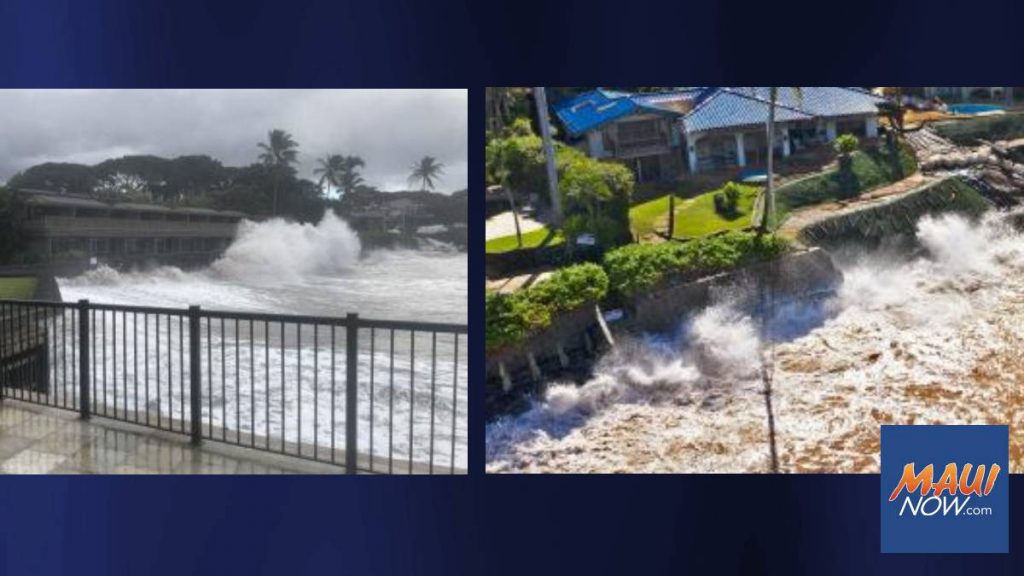New interactive mapping tool provides coastal flooding predictions for West Maui

A new interactive mapping tool provides predictions of coastal flooding in West Maui under various scenarios of sea-level rise and a range of wave events. It is available to community members, property owners, businesses and government officials.
The “West Maui Wave-Driven Flooding With Sea Level Rise” tool was created by researchers at the Pacific Islands Ocean Observing System based at the University of Hawaiʻi at Mānoa.
The combination of high sea levels and large swells can result in significant coastal erosion, damage to infrastructure and properties, and land-based sedimentation that impairs coastal water quality.
Hawaiʻi has experienced an increase in wave plus tide-driven flooding in recent years, and these events are expected to grow in numbers and duration due to sea-level rise and changing wave energies.
“Along with other planning tools, we hope these scenarios that are tailored for West Maui will be useful to inform land use planning,” said Tara Owens, co-investigator on the grant that funded this work and extension specialist with the UH Sea Grant College Program.
The public is invited to learn about this new tool on Aug. 30 from 4 to 5 p.m. Register online to receive log-in information.

Factors impacting West Maui
The water level — and the associated risk of coastal flooding — in West Maui is impacted by several factors that are included in the flooding product: daily tidal cycles, long-term sea-level rise, moderate-to-large wave events and the slowly-oscillating ocean sea level height around Maui (caused in part by El Niño).
Researchers created the new tool by adopting a next-generation modeling approach to combine these factors and augment the annual high wave flooding model represented in the State of Hawaiʻi Sea Level Rise Viewer.
In addition to chronic coastal erosion leading to severe damage of properties, wave overtopping and flooding also pose a major safety concern to infrastructure — especially Honoapiʻilani Highway, the major access corridor to West Maui.
“Coastal managers and planners in Hawai‘i rely on science-based information that can support decision making,” said County of Maui Coastal Planner Jim Buika. “This scenario-based tool is powerful because it is locally specific and easy to use. It can guide us to promote sustainable land use and environmental protection.”
The wave flooding tool and a related forecast of coastal flooding for the upcoming six days in West Maui were developed by the Pacific Islands Ocean Observing System through a collaborative effort led by the Coastal Hazards Group in the Department of Oceanography at UH Mānoa.
It was funded by the National Oceanic and Atmospheric Administration grant “Enhanced Community Resilience With Real-Time Notifications of Hazardous Wave-Driven Flooding and Erosion Events.”









